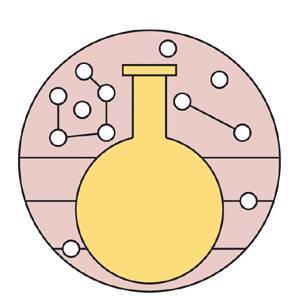On the 21st June, Mars will reach its closest approach to Earth for a decade. These close approaches are superb opportunities for everyone to observe the red planet. They occur every two years but, because Mars loops around the Sun in an elliptical orbit, some of these 'oppositions' are more favourable than others. Through a telescope, Mars is an evocative sight. The shading produced by the surface features and the brightness of the icy polar caps makes it look tantalisingly Earth-like. In fact, it is hard to remain totally objective about the place.
As a result, Mars comes with a full complement of what might be termed, scientific myths. Pivotal to the myths is the question: Is there or has there ever been life on Mars?
During the 1890s, astronomers attempted to draw maps of Mars' surface. They were puzzled and finally plagued by straight lines that appeared across the planet's globe. The President of the British Astronomical Association, Edward Walter Maunder, argued that these 'canals' were optical illusions. Because telescopes were unable to resolve the surface features fully, the shadowy half-glimpsed images were interpreted as straight lines by the brains of the astronomers involved. In America, Percival Lowell championed the view that they were true canals, constructed by a desperate Martian civilization, to irrigate the equatorial regions of their dying world.
It was not until a decade later that spectroscopic analysis of Mars showed, beyond doubt, that water vapour was largely absent from the tenuous Martian atmosphere. No water vapour had to mean no canals.
Indeed, contemporary robotic exploration has confirmed that Mars is a dry, barren world. At the same time, it has also revealed that, in its past, Mars was probably more Earth-like with open tracts of running water, maybe even an ocean. This has rekindled the hope, belief and theory that the origin of life might have taken place on Mars, too. Nowadays, no one expects to find animals or intelligence. Simple microbes, or their fossilised remains, would suffice. Like the astronomers of over a century ago, no one can be certain whether planetary scientists are reading too much into their results. Consequently, more and more time, effort and money is being poured into exploring Mars. NASA recently launched the Mars Odyssey spaceprobe and plan to send another two during 2003. The European Space Agency (ESA) is currently building its first Mars spaceprobe, the Mars Express, which will take the British-led lander, Beagle 2. Both sides of the Atlantic are also designing missions to return samples from the red planet, using sophisticated robotic spacecraft.
Will these efforts be enough to solve the outstanding problems? Some argue that the only way truly to investigate Mars is to send humans. Only with human ingenuity, inspiration and ability can we sample what our neighbouring world has to offer.
The most honest scientists advocate the human exploration of Mars simply because it is there. They offer no pre-conditions on what rewards the mission will bring to Earth. Nor do they make excuses about the crudeness of our robotic envoys.
The 'myth' of Mars still has us firmly in its grip. We all want people to go to Mars, so that we can experience, albeit vicariously, the thrill of exploring the unknown.
Sources and further reading: The Search for Life on Mars, Proceedings of the 1st UK conference, edited by Julian A. Hiscox. Published by the British Interplanetary Society, 2000. The Case For Mars by Robert Zubrin and Richard Wagner, Touchstone Books, available from Amazon UK.

